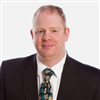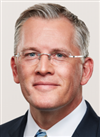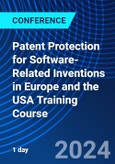Technology and software have influences across most business sectors in relation to leveraging growth, and this has important implications for IP and patent laws. This intensive one-day event will help you to understand the development strategies impacting software patents and update you on the major developments in European patent law, in particular GUI inventions and ‘mixed’ inventions with both patentable and non-patentable subject matter.
Under the guidance of our expert faculty, you will learn how recent US case law impacts software patents in the US and become proficient in exploiting the differences between the US and Europe regarding the scope of available patent protection. The course will provide a review of key tactics for US practice and give you an understanding of the latest US strategies in dealing with obviousness and the rise of indefiniteness and written description issues.
Having an experienced in-house lawyer on the faculty will ensure that you benefit from their practical knowledge on selecting and protecting software technologies and get invaluable insights into foreign filing strategies.
You will get to grips with how to avoid pitfalls in claim drafting using case studies and understand whether patent protection should be available for software-related and business-related inventions. A practical workshop session will provide ample opportunity for discussion with the expert faculty and consolidate your learning.
Certification:
- CPD: 6 hours for your records
- Certificate of completion
Agenda
Patent protection for software-related and business-related inventions in Europe
- Review of European law relating to the protection of software-related and business-related inventions
- Review of EPO Board of Appeal decisions including most recent decisions
Patent protection for software-related and business-related inventions in the United States
- Update on recent Federal Circuit decisions impacting software
- Patent practice in the wake of the US Supreme Court’s Alice decision
- Detailed analysis of USPTO’s post-Alice guidelines
- Case examples and claim techniques for US practice
- Post-grant considerations for these technologies
Preparation of patent applications and prosecution of European applications for software-related and business-related inventions
- Available claim formats and description requirements in Europe
- Drafting applications to take account of European and US requirements
- Filing strategies
- Dealing with EPO objections under Article 52(1) EPC
Industry view: an in-house perspective on managing IP protection of software-related inventions
- Selecting what software technologies to patent or to protect in other ways
- Foreign filing strategies that balance budget and likelihood of success for software innovations
- Challenges facing companies involved in managing software patents and responsible for software-related technologies
Practical workshop: questions, answers and discussion of specific examples
- An interactive session designed to apply earlier discussion to practical situations
- Examples and approaches for protecting software and computer-related innovations, taking into account the unique requirements in the US and Europe
Speakers

Mr Alan Boyd,
Patent Attorney ,
D Young & CoAlan Boyd is a Patent Attorney at D Young & Co. Before he joined the patent law profession, he was a software engineer researcher and research assistant. Alan’s main areas of expertise include computer architectures, embedded systems, digital electronics, telecommunications and networks. He is a senior associate of D Young & Co’s electronics, engineering & IT team, and has a great deal of experience in drafting and prosecuting patents for a range of clients. He is also an examiner for the legal paper in the European Qualifying Exams.

Mr Tim May,
Partner ,
Finnegan LLPTimothy May is a partner in the Washington, DC office of Finnegan LLP. He has over 20 years experience in the field of US patent law, and focuses his practice on advising European high-tech companies on US patent matters. He counsels clients in all areas of US patent practice and currently manages the patent portfolios for several European clients in various electrical and mechanical technologies. He also counsels clients on patent validity and infringement. Prior to joining the firm, he served as a Patent Examiner at the US Patent and Trademark Office, where he examined applications involving digital communications, image analysis and testing and measurement devices.
Who Should Attend
- Patent attorneys (both from private practice and industry)
- In-house patent and general counsel
- Chief information officers
- Chief technology officers
- Business development and technology professionals
Location
ADDRESS
Rembrandt Hotel
11 Thurloe Pl,
Kensington
London
SW7 2RS
United Kingdom
DIRECTIONS
The Rembrandt Hotel is located at 11 Thurloe Place, London, SW7 2RS. The hotel’s location in central London couldn’t be better, whether you’re travelling for business or leisure. You’ll be right between two of London’s most fashionable areas – South Kensington and Knightsbridge – within walking distance of museums, theatres, Harrods and Hyde Park.
You can hop on the Tube at South Kensington and take the District, Circle or Piccadilly lines direct to the City of London, Heathrow Airport and all other areas of the city. Look out of your window and you may well see the Victoria and Albert Museum – it’s right across the street.









